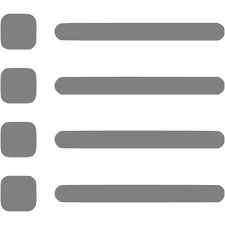Create absence types
Create absence types to add to agents' schedule when they are away. Create different absence types to use in different situations, for example when the agent is ill, on vacation, on parental leave, or arrives late.
Absences are added to the schedule manually by planners or supervisors and when agents send absence requests or use absence reporting.
Track each agent's usage of selected absence types with personal accounts.
Prerequisites
- You have the Scheduling settings permission.
Page location
WFM > WFM settings > Scheduling settings > Absences
Procedures
Create absence types
Create absence types to use when agents are away.
- Click Add new absence.
- Enter a Name for the new absence.
- Enter a Short name for the absence, with a maximum of two characters. The short name is displayed for full-day absences where the space is limited.
- Select a Color that will appear when full-day absences or part-day absences are displayed for a shift.
- Select the appropriate check boxes for this absence type.
Is contract time
Select this check box if the absence counts towards an agent's contracted time for a schedule period. The contract time is used as a target when scheduling. Only absences that are marked as Is contract time will deduct from the budget allowance for agent absence requests.
NOTE Vacation and illness are often contract time absences, because the agent does not need to work extra to compensate for being away. Absences where the agent is away without a valid cause, like late arrival, are not contract time.
Is work time
Select this check box if the absence is a work-related task. The work time is used for contract validations, for example nightly rest, weekly rest and maximum weekly work time. Normally, absences are not work time.
Is paid time
Select this check box if the absence is paid. The paid time is mainly used for reporting.
EXAMPLE The Vacation absence type is paid, and the Late arrival absence type is not paid.
- Select the Use for requests check box to make it possible for agents to send absence requests with this absence type.
-
Select a Tracker type if you want to keep track usage of the absence type in a personal account for each agent. You can then enter how many days or hours of the absence type the agent has for a defined period and how many they have used.
NOTE If you select the Days tracker type, a full day will be deducted from the personal account, even for a 2-hour absence. To track hours and minutes, select the Time tracker type. After you start to use a tracker for an absence type, you cannot change the tracker type. If you do not want a tracker type, select None.
-
Select the Confidential check box to make the absence type visible only to users with the View confidential permission. Other users can still see that the agent is absent, but the type of absence will not be displayed.
NOTE Confidential absences are still visible in the Ready-time adherence reports.
- Enter the Payroll system code for the absence. This is used in payroll exports to define the compensation.
- Click Save. If you do not want to save the absence type, click Discard changes.
Edit an absence type
- Click the edit icon for the absence type that you want to edit.
- Edit the fields, where necessary.
- Click Save. If you do not want to save the absence type, click Discard changes.
Clone an absence type
- Click the copy icon for the absence type that you want to copy.
- Edit the fields, where necessary.
- Click Save. If you do not want to save the absence type, click Discard changes.
Delete an absence type
Delete absence types that are no longer needed.
IMPORTANT Do not delete absences that are still in use. Rename the absence if you want to indicate that it should not be used but keep it, so that it does not affect the history.
- Click the trash can icon for the absence type you want to delete.
- Click Delete for the confirmation question.
Related topics

